Safest Latin American Countries to Visit in 2025
Disclaimer: Some links on this page may be affiliate links. If you purchase anything through them, I will receive a small commission at no extra cost to you! Further details in the Privacy Policy.
Introduction
The safest countries to visit in Latin America in 2025 are Argentina, El Salvador, Uruguay, Chile, Costa Rica, and Paraguay. These are the beginner spots you should be targeting if it is your first trip to this beautiful part of the world.
The likes of Venezuela, Ecuador and northern Brazil are a little more challenging. There are safe places within those countries (for example, southern Brazil, or the Galapagos Islands in Ecuador), but the overall country requires extra precautions. I would recommend starting with beginner and intermediate countries.
Having travelled extensively through Latin America, I wish to share some advice to anyone looking to explore my favourite region in the world.
I will explain why these countries are the safest, which parts of each country should still be avoided, and why certain countries such as Panama have been excluded despite often making these lists.
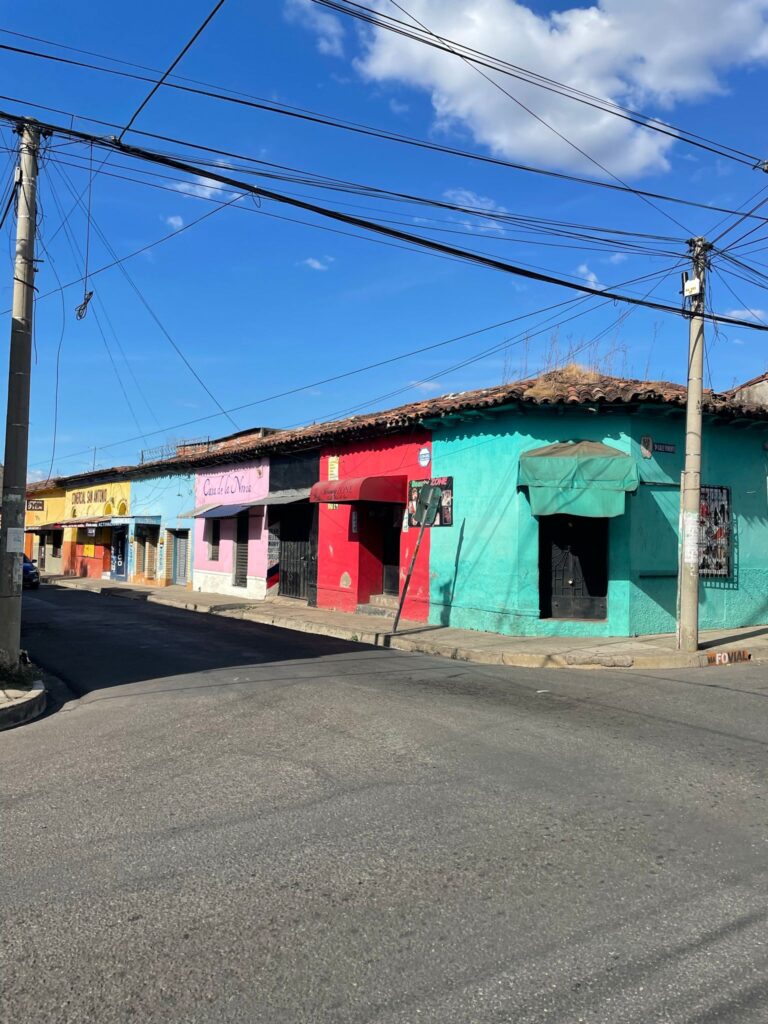
Which Countries Make up Latin America?
This question is harder to answer than you may think. However the general consensus is that the Spanish and Portuguese-speaking countries in Central America, South America and the Caribbean (and Mexico) are what constitute “Latin America”.
Broader definitions may also include the French-speaking countries and territories, or every country in mainland Central and South America. However, these are the countries that undoubtably come under the “Latin America” banner:
- North America: Mexico
- Central America: Guatemala, El Salvador, Honduras, Nicaragua, Costa Rica, Panama
- South America: Venezuela, Colombia, Ecuador, Peru, Bolivia, Paraguay, Chile, Argentina, Uruguay, Brazil
- Caribbean: Cuba, Dominican Republic, Puerto Rico*
*A USA territory, but generally defined as being in Latin America
These countries and territories are sometimes included in broader definitions of Latin America:
- Central America: Belize
- South America: Guyana, Suriname, French Guiana*
- Caribbean: Haiti, Guadeloupe*, Martinique*, Saint Barthelemy*, Saint Martin*
*French territories which are sometimes classified as “Latin America”
Canada, the USA (excluding Puerto Rico) and any Caribbean territories not mentioned above are not considered to be part of Latin America under any definition.
For the purpose of this post, I will be focusing on the first group of countries: those which count as Latin American countries without a doubt.
If you want to know specifically about South America, check out my safest countries in South America rankings instead
What are the Main Dangers in Latin America?
Latin America is safer than the average person thinks. Sure, that doesn’t mean you can run around waving $50 bills in the air and expect everything to run smoothly. But it also doesn’t mean that within minutes of leaving a Mexican airport you’ll end up in the hands of the dreaded cartels.
It is true that violence is a problem in some parts. But even in countries with a lot of violent crime, you will often see the majority of it occurring in certain areas. Usually in large cities, and often between locals involved in criminal activities. Tourists are rarely targeted with violence.
Now robberies are a different story. This is by far the biggest threat to tourists in Latin American countries. I spent ten months in the region myself and was almost mugged on the streets of Quito.
I met several travellers who had their own mugging stories to share. Santiago in Chile and many parts of Colombia were the scenes of many of these crimes. However, there was one common factor that every single traveller with a story like this (myself included) shared. Every single one did something silly to put themselves in a vulnerable position.
I will share more later on in this post on how to avoid ending up in such a situation.
Political instability is another key danger to be aware of. This is a region where things can change quickly with little warning. My plans to visit Ecuador were almost scuppered when protests spread like wildfire, roadblocks were erected across the country and little traffic could move within Ecuador’s borders.
Ironically, the flu held me up in Colombia just long enough for the chaos to subside. These protests initially started as a rally against fuel and food price rises.
Nicaragua and Bolivia have also had their fair share of disruption related to politics in recent years.
Wildlife and the environment can also pose a threat to tourists and locals alike. Mosquitoes are perhaps the biggest danger, given the diseases they carry and how widespread they are.
Panama, Honduras and Guatemala all experienced dengue fever outbreaks in 2024.
There are many dangerous creatures such as jaguars, crocodiles, snakes, poison dart frogs and deadly spiders. Although the good news is that many of these are very rare to find, let alone come into contact with.
The main environmental issues come from flooding which can be common at times, landslides which it can cause, and hurricanes which often hit Central America and the Caribbean between May and October.
The Safest Countries to Visit in Latin America in 2025
One of the most common metrics for measuring a country’s safety is the Global Peace Index (GPI). The index uses 23 different metrics ranging from terrorism impact, violent crime and political instability to UN peacekeeping funding and military expenditure. These are used to calculate a score ranging from 1 (best) to 5 (worst).
In 2025, Iceland is 1st with a score of 1.112 and Yemen sits bottom in 163rd position with a score of 3.397.
These figures are from 2024 as the 2025 Global Peace Index is yet to be published. If last year is anything to go by, it should be released by mid-2025.
My recommendations for the safest countries to visit in Latin America in 2025 will take the GPI into account, but personal experience will also be a key ranking factor.
At the time of writing I have been to every Latin American country aside from Cuba and the Dominican Republic (and Puerto Rico). From my knowledge of those countries, only Cuba could be a potential contender to add to this list.
I have met numerous locals and travellers alike, as well as experiencing these countries first hand within the last 0-2 years, most of them multiple times. Therefore I will lean on that to come to conclusions.
I am also judging the country on its overall situation in 2025. This is bad news for Panama (mostly very safe, but home to the deadly Darien smuggling route and the dangerous city of Colon).
Let’s start with the GPI ranking for each Latin American country however:
| Ranking (Latin America) | Country | Ranking (Global) | Score |
|---|---|---|---|
| 1 | Argentina | 47 | 1.855 |
| 2 | Uruguay | 52 | 1.893 |
| 3 | Costa Rica | 58 | 1.950 |
| 4 | Chile | 64 | 1.978 |
| 5 | Bolivia | 68 | 2.009 |
| 6 | Paraguay | 74 | 2.044 |
| 7 | Panama | 96 | 2.140 |
| 8 | Dominican Republic | 97 | 2.157 |
| 9 | Cuba | 98 | 2.160 |
| 10 | Peru | 99 | 2.179 |
| 11 | El Salvador | 107 | 2.250 |
| 12 | Nicaragua | 113 | 2.295 |
| 13 | Guatemala | 117 | 2.332 |
| 14 | Honduras | 123 | 2.415 |
| 15 | Ecuador | 130 | 2.572 |
| 16 | Brazil | 131 | 2.589 |
| 17 | Mexico | 138 | 2.778 |
| 18 | Venezuela | 142 | 2.821 |
| 19 | Colombia | 146 | 2.887 |
The main differences compared to the 2023 rankings are that:
- Costa Rica dropped from 1st to 3rd (among Latin American countries), swapping places with Argentina
- Ecuador (unsurprisingly) had the biggest drop falling from 9th to 15th (regional rankings), 2.095 to 2.572 (score) and 97th to 130th (global rankings)
- Colombia dropped to bottom spot in the regional rankings, with Venezuela climbing a place to 18th
- More Latin American country’s GPI rankings dropped than rose compared to last year
I will be updating this post once again when the 2025 GPI rankings have been released.
Without further ado, let’s get into the top 6 safest countries to visit in this beautiful part of the world.
1) Argentina
Global Peace Index ranking: 1 (Latin America), 47 (Global)
The safest Latin American country in 2025 is Argentina. I spent a couple of months here recently, and never once felt in any danger, a stark contrast to Brazil where I write this from and find myself looking over my shoulder on an almost non-stop basis.
Argentina has soared to the top of the GPI, with its battered economy showing the first green shoots of recovery under Javier Milei who was elected on promises to reverse alarming inflation and poverty.
Argentina is a very Europeanised country with a lot of similarities to Europe in culture, architecture and lifestyle. It is also a country where you can find some world class steak for rock bottom prices.
The gang violence and cartels plaguing other parts of the continent are not such a big problem in Argentina, although that doesn’t mean everywhere is safe.
The one spot that can get a little hairy is the city of Rosario, the birthplace of some bloke called Lionel Messi.
Apparently he kicks a ball around and is quite good at it, just in case you haven’t heard. Oh, it was also the birthplace of a slightly less inspirational chap called Che Guevara.
Anyway, what makes Rosario a bit dodgy? Well it’s the heart of Argentina’s drug trafficking route, and has experienced some gang violence as a result. This is unlikely to have a direct impact on tourists, but getting caught in the crossfire can’t be ruled out.
Rosario aside however, Argentina has few safety issues with the people. Capital Buenos Aires does see its fair share of petty thefts, but no more on average than any other major city in a safe country.
You will probably visit the incredible La Boca neighbourhood at some point in Buenos Aires. It gets quite dodgy at night but is very safe during the day time if you stick to the tourist spots around El Caminito. Don’t walk outside of these however. After Rosario, the area surrounding La Boca is just about the only place with a reputation for violent crime.
Other parts of the country, such as German-themed village Villa General Belgrano, wine capital Mendoza and popular Iguazu Falls are very safe and have almost no crime.
In fact Mendoza is one of South America’s safest cities.
Perhaps the main threat to safety in Argentina comes from the biting cold in the country’s south.
Argentina is home to the beautiful mountainous Patagonia region. Take precautions against cold weather and ensure you know how to navigate mountains safely. Do this and your Argentina trip will almost certainly be fine.
People in Argentina are very poor due to the collapse of the peso in recent years. Despite this, there has been no notable increase in crime, a contributing factor to its rise to top spot in the 2024 GPI rankings.
I have previously written a detailed guide on how to save money in Argentina.
Argentina is my favourite country in the world due to its incredible landscapes, amazing food, and high levels of safety. If you’ve never been to Latin America before, this is the safest place to start in.
Argentina deserves its title as the safest country in Latin America. I would also call it the best country to visit if you’ve never been to South America before.
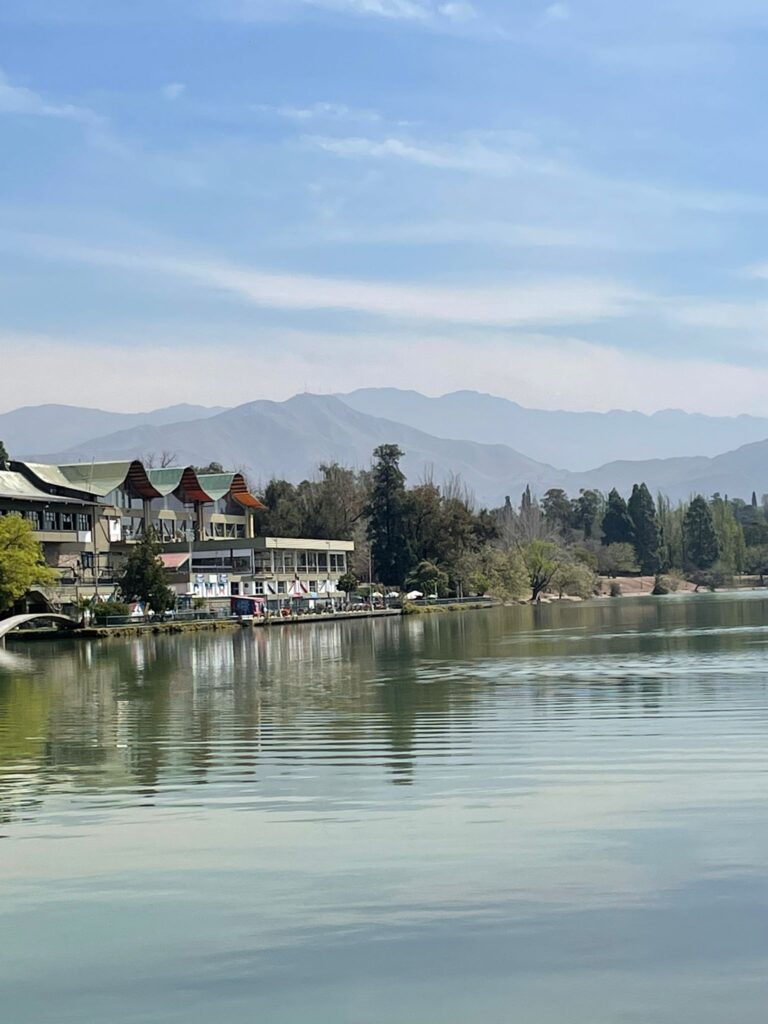
2) El Salvador
Global Peace Index ranking: 11 (Latin America), 107 (Global)
El Salvador is one of the safest places in Latin America.
Wait, what?? Isn’t that the country with all the dangerous street gangs such as MS-13 and Calle 18 running riot?
It was until very recently. In fact El Salvador has gone from being one of the world’s most dangerous countries to one of Latin America’s safest in just over two years. This was a country plagued by deadly gang violence for a long time. But the president said enough is enough.
At the end of March 2022, just two weeks before my own trip to El Salvador, 87 people were murdered in a 3-day period, with 62 killings taking place on the Saturday alone.
This prompted president Nayib Bukele to declare a state of emergency suspending some laws and providing law enforcement with new powers which allowed them to carry out mass arrests on gang members without red tape holding up the process.
This state of emergency is still in place in 2025 and has dramatically transformed the country. El Salvador now has the world’s highest incarceration rate, making it the only country with over 1% of the population in prison.
This brutal crackdown has flipped this tiny Central American country from one of the most dangerous Latin American countries, to just about the safest.
Salvadorean gang members are often easily identifiable with facial tattoos common amongst them.
I must admit that two weeks after the crackdown began, I was a little nervous whilst getting off a bus in San Salvador and spotting a chap with his face covered in tattoos.
I decided against staring long enough to see if his face was marked with gang symbols. Perhaps he was just a local dentist or lawyer paying tribute to his daughter’s academic successes… right??
Anyway, the crackdown has been one of the biggest political success stories in the 21st century. And Bukele was rewarded in February 2024 by being re-elected as president of El Salvador with a record 85% of the votes.
There has never been a better time to visit this beautiful country where you can see the stunning Santa Ana Volcano and nearby Coatepeque Lake. World famous surfing spot El Tunco and nearby “Bitcoin Beach” El Zonte are other popular spots in the country.
This is a real underrated gem of a country with a lot of stunning natural beauty and beautiful colonial buildings. I would say it is one of the best countries in Central America to visit.
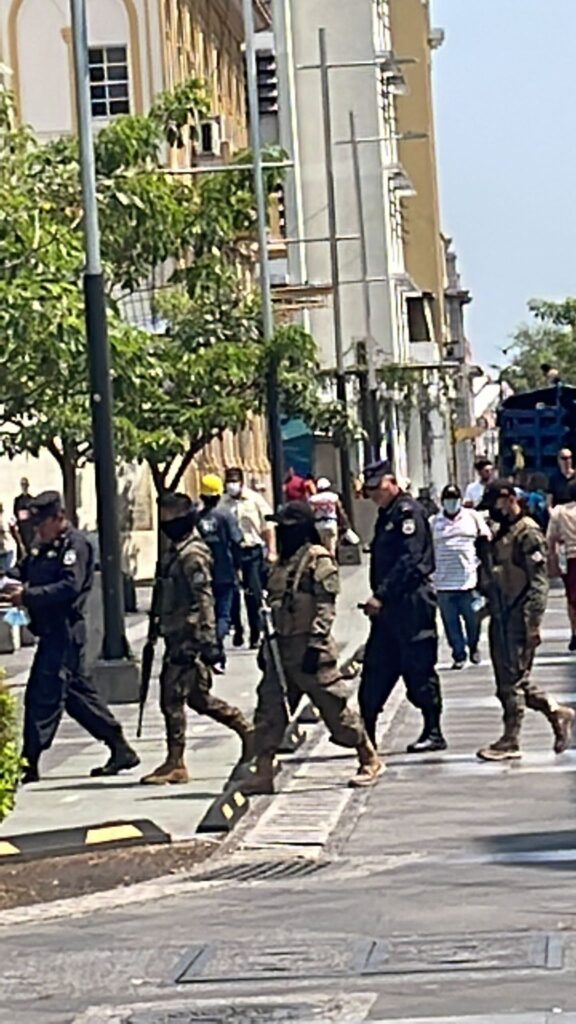
3) Uruguay
Global Peace Index ranking: 2 (Latin America), 52 (Global)
One of the safest South American countries by far, and few would argue with that. Uruguay often tops Latin America safety lists for good reason.
Uruguay is a beacon of political stability, ranking 31/193 for this metric according to research by business and economics expert The Global Economy. Unlike other South American countries, Uruguay does not suffer from regular riots and unrest.
Violent crime here is very low. Alongside neighbouring Argentina, Uruguay is the most Europeanised country in South America. The culture, demographics and architecture make it seem like a country in Western Europe.
The gang violence and cartel wars which plague other Latin American nations are nowhere to be seen in sleepy Uruguay.
This was one of the few countries where it felt safe to go out alone after dark. I wouldn’t recommend walking around the streets with your phone in your hand in Montevideo, but the odds are in your favour here. Something which certainly wouldn’t be the case in Ecuador or northern Brazil.
Uruguay wasn’t the most exciting country in my opinion, but as one of South America’s safest countries, it’s worth considering for a visit.
You can take a day trip from Buenos Aires to Colonia, head on to Montevideo, or explore the beaches of Punta del Este.
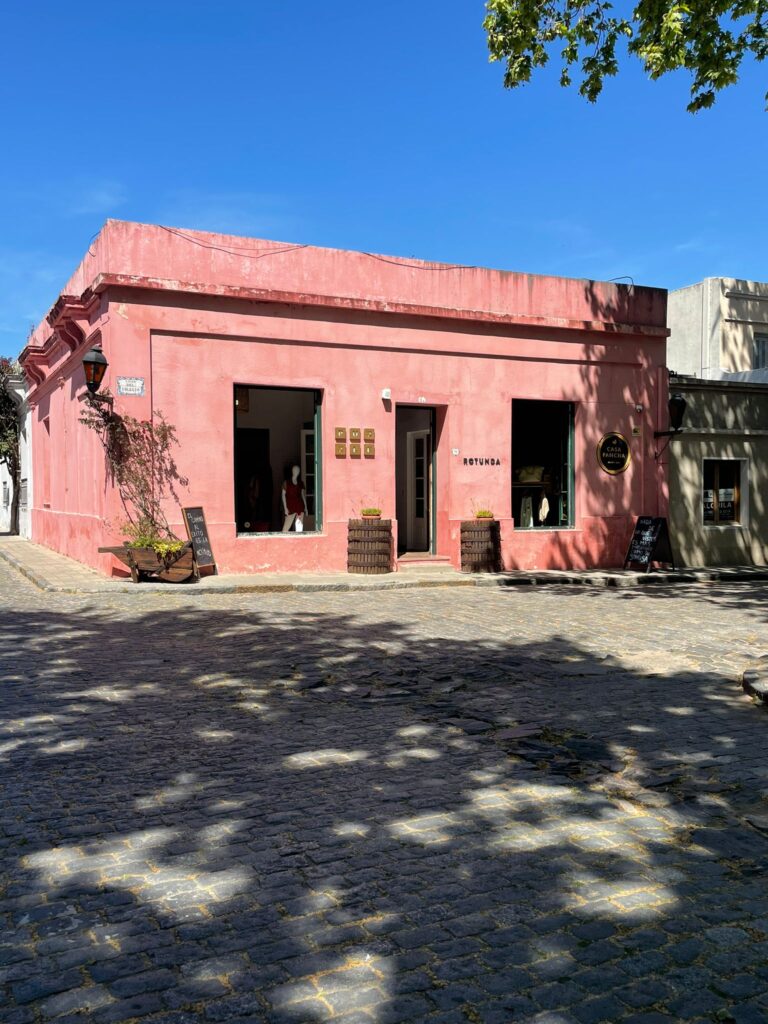
4) Chile
Global Peace Index ranking: 4 (Latin America), 64 (Global)
When I first wrote this post in February 2024, I omitted Chile due to the Mapuche Conflict in the country’s south. But aside from the small parts of the country where this is taking place, and capital Santiago, Chile is very safe.
The Mapuche Conflict is a land ownership dispute between the indigenous Mapuche, and the Chilean government.
It is centered around the Araucania region, with nearby Biobio, Los Lagos and Los Rios also experiencing violence at times.
In practice, tourists are highly unlikely to find themselves caught in the crossfire, with clashes generally occurring deep inside rural areas.
The only other part of Chile to be wary of, is the capital Santiago which experiences regular violent protests, especially on Friday afternoons.
One of my all-time travel lowlights was getting caught up in a riot outside my hostel back in 2022.
Santiago skewed my perception of Chile. Fortunately I went back to give the country a second chance and loved it.
Outside of the areas mentioned above, Chile is comfortably one of Latin America’s safest countries, which is why I’ve added it to this list.
Stargazing in the Atacama Desert is one of the highlights, Torres del Paine should be a must-visit on your Patagonia itinerary, and mystical Easter Island is one of the most fascinating places on the globe.
All three locations mentioned in the previous paragraph pass the “is it safe to walk around with your phone out at night” test. A rarity in most of Latin America.
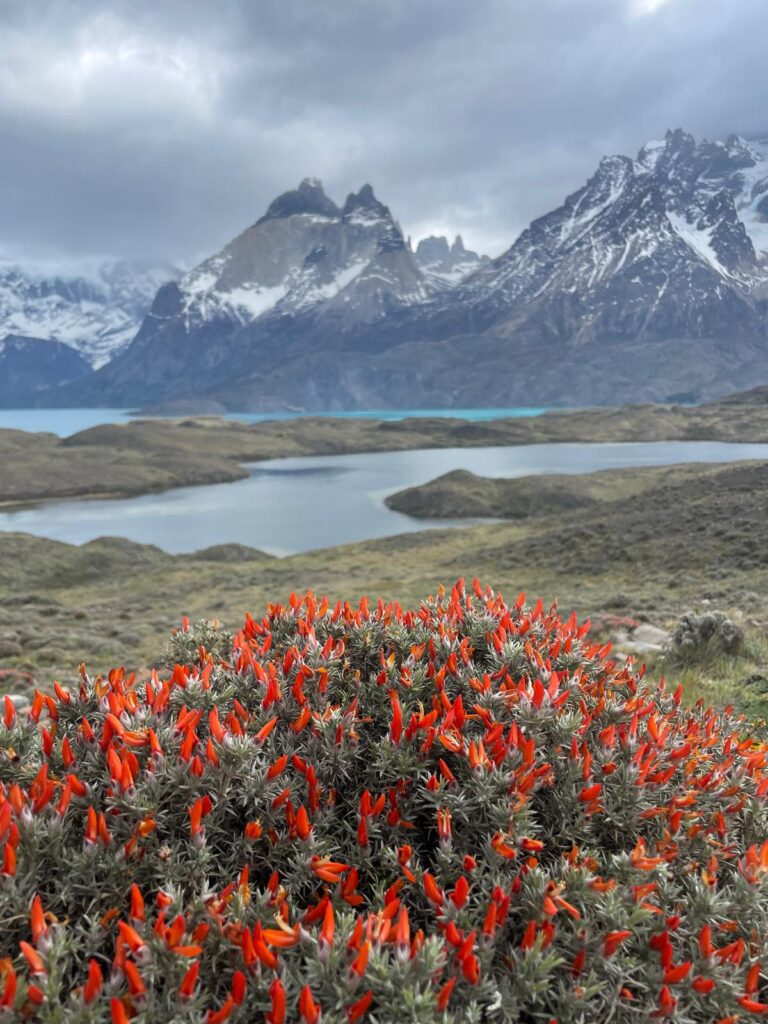
5) Costa Rica
Global Peace Index ranking: 3 (Latin America), 58 (Global)
The fifth safest country in Latin America is Costa Rica. One of the more touristy destinations, with visitors flocking in large numbers to see the wonderful wildlife this country has to offer, Costa Rica is also very safe.
One slight exception would be the capital San Jose. Whilst it isn’t a “dangerous” city in the Caracas/Tegucigalpa category, it has a bit of an edge to it, and I wouldn’t recommend walking alone here after dark.
There are still some dangerous parts of San Jose. These aren’t places you will end up as a tourist, but perhaps you should be aware of them regardless.
La Carpio, Pavas, San Sebastian, Los Guido, Santa Rita de Alejuela, Desamparados and Leon XIII are all places to avoid. The centre of Limon on the Caribbean coast, and some areas along the Nicaragua border do also have a higher rate of crime than elsewhere.
The good news? You will probably be visiting none of the above during your trip to Costa Rica. There are two primary factors that draw people to this country: the wildlife and the beaches.
Sure, petty crime does occur, but with simple precautions you can avoid becoming a victim. In the major wildlife spots such as Tortuguero or La Fortuna, crime is virtually non-existent.
In fact, the main threat in Costa Rica comes from the wildlife. With over half a million species, there are many harmless creatures, but also a few that can book you a date with the grim reaper in extreme circumstances.
Crocodiles, poison dart frogs, many snake species and the Brazilian wandering spider (one of the world’s most venomous) can all be found in Costa Rica. But incidents involving humans are very rare, and most creatures tend to only strike as a last resort if they feel threatened.
The one local resident you should view as a serious threat however is the fer-de-lance viper.
The majority of snake bites in Central America come from this deadly creature, which does an excellent job of camouflaging itself in rainforest environments. Even if you survive a bite from one, the experience can be painful and recovery can take a few weeks.
The good news is that even bites from the pesky fer-de-lance are rare. Just be sure to dress appropriately and if possible, find a guide for any jungle treks.
Wildlife adventures in Costa Rica should be right at the top of your bucket list for Central America.
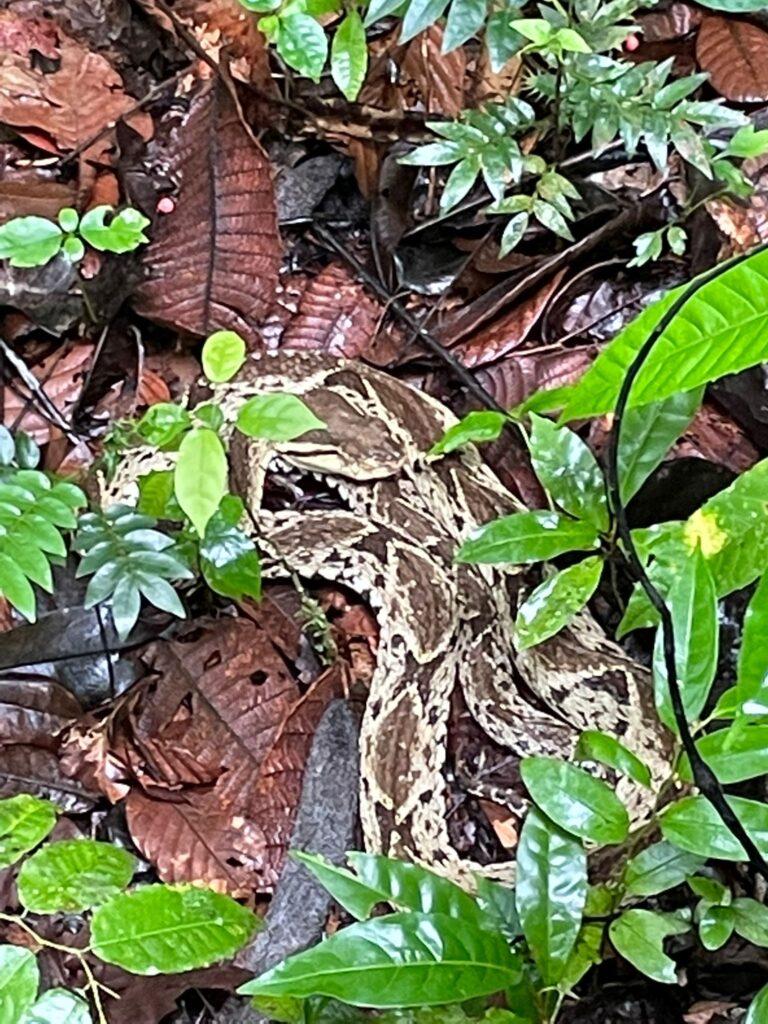
6) Paraguay
Global Peace Index ranking: 6 (Latin America), 74 (Global)
My final recommendation for one of the safest countries in Latin America is Paraguay.
A little-known territory in the heart of South America, this is one of Latin America’s least visited nations, mostly due to its lack of tourist attractions.
However, I have a little more knowledge on Paraguay than the average westerner, as this is my girlfriend’s country, and I’ve learnt a lot since first visiting in 2022, followed by a couple of longer stays in 2024. Therefore I can share what I know about the safety situation with you right now.
Paraguay is mostly safe. The majority of tourists will only visit the capital Asuncion. Like any average large city, it is safe for the most part, with a few pockets you should avoid. Most notably, the Chacarita, a slum in the northern part of the city.
When I was first in Asuncion, locals nearby warned me away from the Chacarita as I walked nearby. “Muy peligroso!” they said – “very dangerous” in Spanish.
I walked past some wooden shacks which had been set up just outside the Chacarita, to house residents forced to flee their homes by fire.
During under two minutes here I was stared at, hissed at, followed and a lady commented on my phone (which was hidden in my pocket at the time). Didn’t feel safe so I left the area ASAP.
Most other parts of Asuncion are very safe, particularly the historic central areas and posh Villa Morra.
Elsewhere in Paraguay, Ciudad del Este on the Paraguay/Brazil border is a pretty run-down city which many Brazilians visit for cheap electronics.
The city isn’t quite as bad as it looks, but many of the electronics here are fake, police may ask for bribes (just pay if this happens, it won’t be much and could save you a lot of hassle) and there is a risk of petty theft.
The real area to avoid is in the east of the country’s centre, around the borders with Brazil. Pedro Juan Caballero is controlled by Comando Vermelho, a Brazilian narco gang with influence just across the border. Tourists have no reason to come to this area or surrounding cities.
Like Costa Rica, Paraguay does have some dangerous wildlife. Yet it is very rare to encounter anything that could cause real harm. Jaguars are incredibly rare, likewise deadly snakes. Crocodiles exist in the rivers, but can easily be avoided with common sense.
Overall however, Paraguay is a very safe country. Realistically, if you avoid the Chacarita and Brazilian border areas (aside from the Ciudad del Este/Foz do Iguacu area, which is safe) you should have no issues here.
Read more here on safety in Paraguay for tourists.

And What About the Other Latin American Countries?
Why “Safe” Panama Was Excluded from this List
As mentioned earlier, there is one country which features heavily in “safest country” lists that I have not included in this post.
That country is Panama. This beautiful country on the southern tip of Central America has many very safe places. Retiree favourite Boquete and party paradise Bocas del Toro are very safe. Likewise, capital Panama City is one of the safest cities in the Americas.
However Panama is also home to the very dangerous Darien Gap. This vast jungle region is a key drug and people smuggling route from South America to the USA. It covers both Panama and Colombia, and is effectively lawless.
The government can do little to help if you run into trouble in this punishing environment. It is run by guerrilla and paramilitary groups. It has no infrastructure, extreme weather, deadly animals and challenging terrain.
The Darien Gap, the gang-ravaged city of Colon and occasional political unrest ensure that Panama just misses out on this safety list.
A Brief Safety Summary of the Other Latin American Countries
Elsewhere in Latin America: Colombia, Ecuador and Brazil can be travelled to safely, but do have their fair share of crime.
Colombia still has paramilitaries operating in the lawless Darien Gap, large-scale drug crime, and violence in large parts of popular Bogota and Medellin, which has escalated since my last visit in 2022 under president Gustavo Petro.
Ecuador isn’t very safe these days, but the Galapagos Islands are, and the mainland can be traversed safely with a lot more caution.
Brazil is the country I’m based in at the time of writing this post. The south has some very safe spots (Gramado and Canela for example), but the centre, and especially the north can be very dangerous.
Sao Paulo has so many crack addicts roaming the streets, it even has a place called “Cracolandia” where the majority are located. One of the scariest cities I’ve been to outside of the upmarket bubble of Avenida Paulista.
Venezuela is known as the most dangerous country in the mainland Americas. The safety situation has steadily improved in the last couple of years. But “safer” doesn’t mean “safe”. I visited in March 2025, and whilst it’s no Singapore, Venezuela is far safer than I expected and has been getting better since 2021.
Peru and Bolivia are safer than the countries mentioned above, but have their fair share of political instability which can change things at any time, with Bolivia narrowly avoiding a coup in June 2024.
Honduras is a country plagued by gang violence and caution is required whilst travelling through, although Copan Ruinas and the Bay Islands are safe. They have tried an El Salvador-style gang crackdown, although without the same levels of success so far.
Nicaragua is on the safer end of the spectrum despite political instability under dictator Daniel Ortega. Try and avoid capital Managua however, this is the exception.
Guatemala is mostly safe for tourists if you stick to the beaten path. Be cautious heading off the tourist trail however, and do a lot of research before you go to Guatemala City.
Mexico is another mixed bag with cartel wars making some parts of the country amongst the world’s most dangerous. Mexico also has very safe areas. Oaxaca, Bacalar and Tulum are very safe, whilst Mexico City and Cancun have a mixture of safe and dangerous areas.
In the Caribbean, Cuba is one of the countries with the lowest crime rates, and violent crime is very rare. The Dominican Republic has a lot more crime. It isn’t quite up there as one of the more “dangerous” countries on this list, but it certainly requires extra precautions.
How to Stay Safe in Latin America
Latin America is a region that requires more precautions than Europe for example. Here are some tips for staying safe from some of the main threats in the most beautiful part of the world.
Crime
- Do not go out alone at night in cities. There are a few exceptions where it’s fine to do so (Ushuaia or Mendoza for example), but as a general rule of thumb, don’t do this
- If you must go out alone at night, use taxis to get from door-to-door
- Use Uber or similar ride-share apps. Many street taxis are unreliable and there is a high chance they will try to scam you with the price. In some extreme cases, kidnappings have occurred
- Do not get your phone out in the streets of cities at any time of day. Again, this is a general rule and doesn’t apply to everywhere (again, Ushuaia and Mendoza are good examples of safe spots). Using my phone to check maps in broad daylight was exactly how I was attacked by three muggers in Quito
- If you need to use your phone in a large city, head into the nearest shop, cafe or restaurant. Bonus points for going far inside and being discreet rather than standing directly in the entrance. I’ve practiced this ever since the Quito incident in July 2022 and had zero problems since
- Stay away from drugs at all costs, and be very careful with alcohol. Drinks you can cover are a smart idea. Several robberies and even deaths have been linked to drink spiking in Latin America – most notably in Medellin where powerful scopolamine is used to rob tourists
- Be careful using online dating apps. Particularly in Medellin (but also elsewhere in Colombia and some parts of Ecuador and Mexico) thieves set up dates with victims and use the aforementioned scopolamine to rob them. Meet potential dates at daytime in busy places if you use these apps. Do not accept drinks from them and keep your own drink covered at all times. Do not bring dates back to your accommodation
- Lock your bags up on buses. Sleeping on night buses is something you will experience many times whilst travelling across Latin America’s giant countries. I always use combination padlocks to lock compartments of my bags up, and a cable lock to attach my bags to my legs as I sleep. Unlike many, I’ve never been robbed on a bus thanks to this strategy
- Don’t carry much money. Have enough cash in your wallet for daily expenses, but not more than that. I keep my card well hidden in dodgier countries such as Brazil or Colombia
- Read my solo travel safety guide. Even if you aren’t travelling alone, there are many tips to help you avoid becoming a victim of crime.
Wildlife
- Wear long clothing, use DEET spray and sleep under a mosquito net to avoid mosquito bites. Mosquitos cause several deadly diseases including malaria and dengue fever. This advice does not apply so much to cities, deserts and mountainous areas. However it is very important to follow in jungle environments and wetlands
- Snakes are some of the deadliest creatures in the region. Wear boots and long trousers, watch where you walk and use a stick to poke the ground in front of you and alert snakes to your presence
- Be very wary of dogs in the Americas. They can be aggressive and may carry rabies which is fatal in almost all cases where symptoms develop. If you encounter aggressive dogs, pick up a rock (or at least pretend to) and threaten to throw it at them. Failing this, run towards the dog aiming kicks at it. You don’t have to make contact, the kicking action alone will scare the dog off. Stay facing the dog at all times until the danger has passed, but do not make direct eye contact. Do not try to outrun a dog
- One of the deadliest creatures in the Americas is one that isn’t particularly well known. The kissing bug spreads Chagas disease which kills 12,000 people per year across North and South America. It is the main vector for this disease. To avoid them, stay in places where cracks in walls are sealed and pets are kept indoors
- Another surprise killer in the Americas is……. the snail!?!? Yes. Snails living in freshwater sources such as ponds transmit bilharzia which kills 200,000 people globally every year. This is because they release parasites into the water which can infect humans who come into contact with them. To avoid these, simply avoid making contact with freshwater sources. If you want to swim, do so in the sea or a chlorinated pool
- Animals with fierce reputations that can kill but are NOT a serious threat to tourists are as follows: Spiders, poison dart frogs, jaguars, crocodiles and sharks. Whilst the above are all deadly, they are either very elusive, or unlikely to attack humans and can easily be avoided
Weather and the Environment
- On mountains, stick to clear trails and bring emergency equipment if you don’t go with a professional guide
- Tell friends when you go to remote regions where you may not be able to make contact for a while, make sure they know your itinerary and what to do if you need help
- Similarly, in jungles, use a professional guide, and share your plans with friends who can call for help if you don’t make it out as planned
- Between May and November, hurricane season sweeps through Mexico, Central America and the Caribbean. To avoid this, simply follow local warnings – there is normally a minimum of 36 hours between a strong hurricane being announced to the general public, and actually coming in. This will give you time to get to safety before the hurricane hits
- Flooding and landslides do occur. Stay away from cliffs during heavy rain to avoid being caught up in a landslide
Lastly, if you’re hoping to visit this incredible region of the world, I can help you plan your trip.
As with most countries, the dangers are usually overstated. I will be spending the first few months of 2025 in Latin America, and will update this post when necessary with relevant information.
Other Travel Safety Guides
Safety By Country
- Is Bolivia Safe For Tourists To Visit?
- Is Argentina Safe For Tourists To Travel To?
- Is El Salvador Safe For Tourists?
- Is Ecuador Safe For Tourists In 2025?
- Is Myanmar Safe For Tourists In 2025?
- Is Paraguay Safe For Tourists To Visit?
- Is Venezuela Safe For Tourists To Visit In 2025?
Safety By Region
- The Safest Countries In South America In 2025: Ranked
- What Are The 10 Safest Cities In South America In 2025?
- Safest Latin American Countries To Visit In 2025
- Safest Southeast Asian Countries To Visit In 2025
- What Is The Safest City In Southeast Asia In 2025?

El Salvador is safer than Canada and Costa Rica by far… So far.
Completely agree with you on Costa Rica especially! I’ve been to every country in the mainland Americas (minus Canada, Venezuela, Guyana and Suriname), and El Salvador (just after Uruguay) felt the safest by far.
Costa Rica is still pretty safe, but San Jose had a bit of a dodgy feel to it.
Love it, I would say that Uruguay is the safest by far
Thank you! Uruguay is certainly a safe place to visit. Will hopefully get the chance to explore more of it next month.
I do agree overall, I haven’t been to El Salvador though.
El Salvador is a great country! Unfortunately, many people skip it due to its past reputation, and the fact that it’s wedged into a small corner of Central America making it easy to skip straight between Guatemala and Honduras instead. But if you get the chance to go, I highly recommend it.